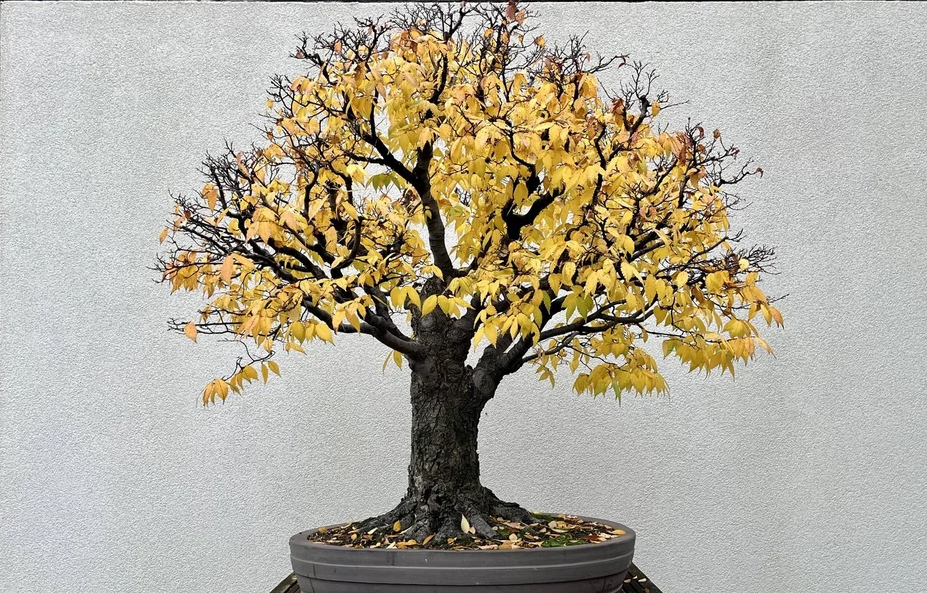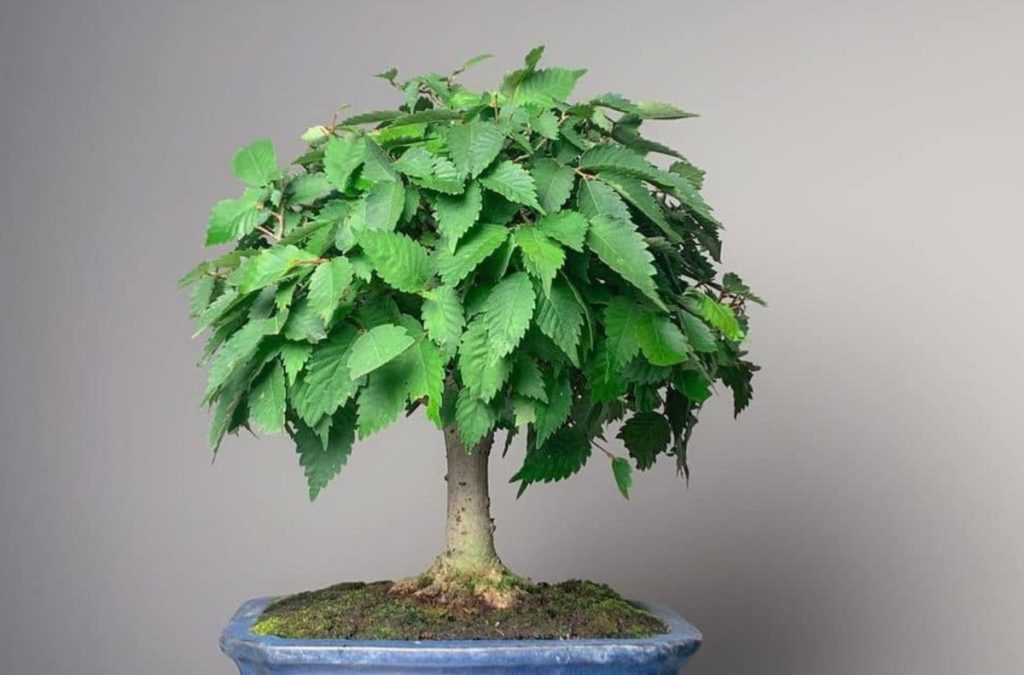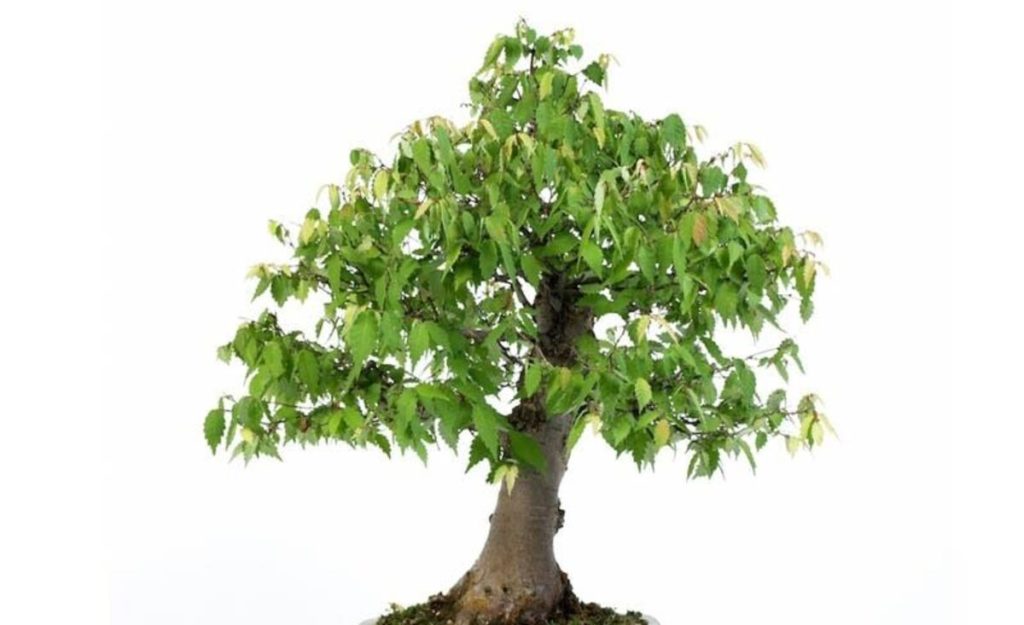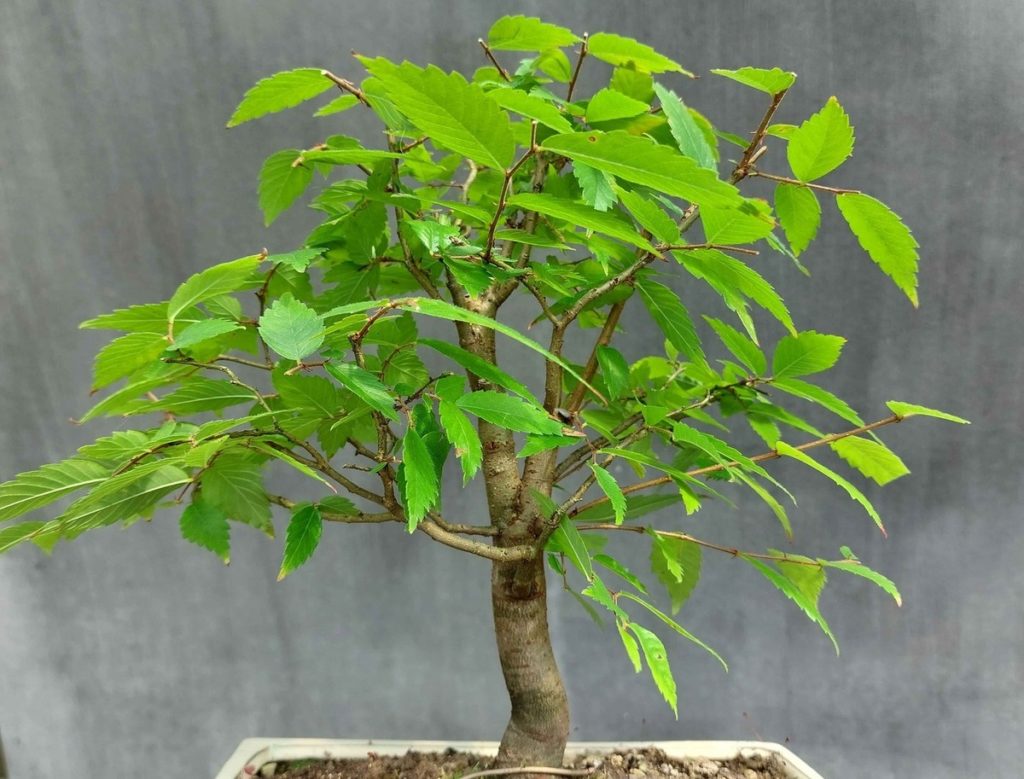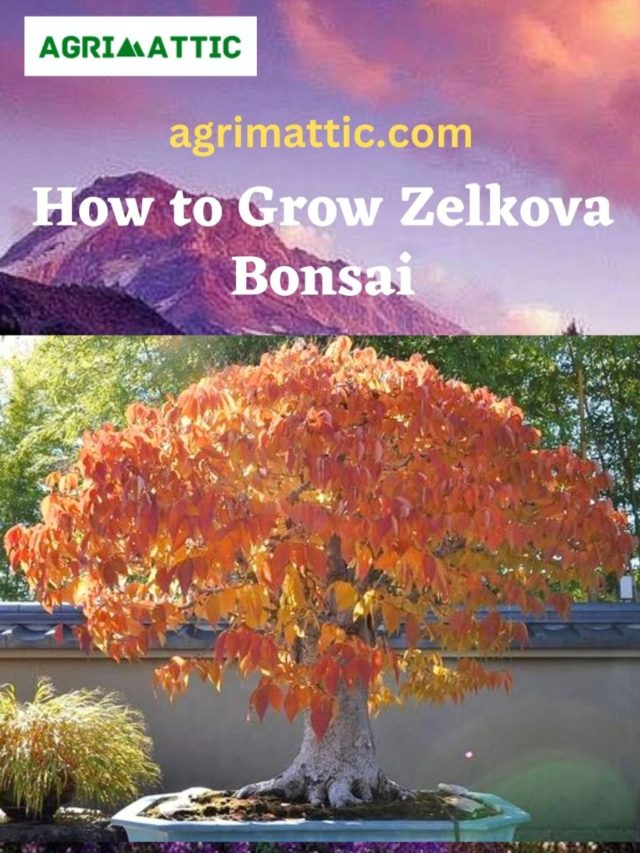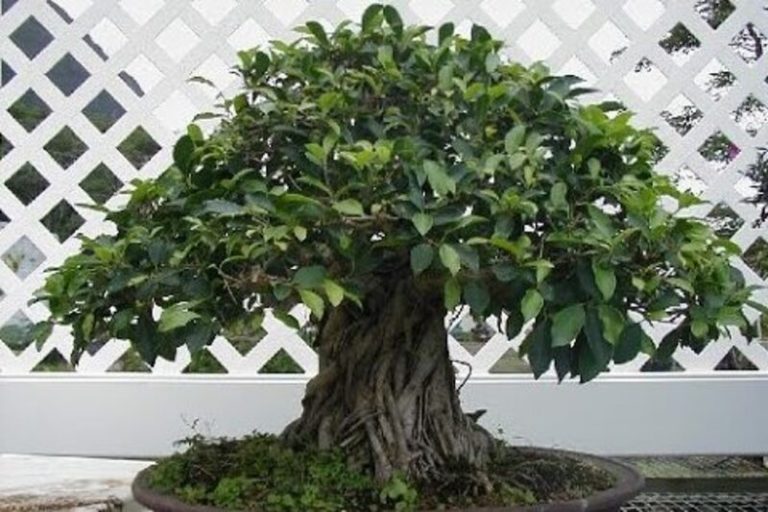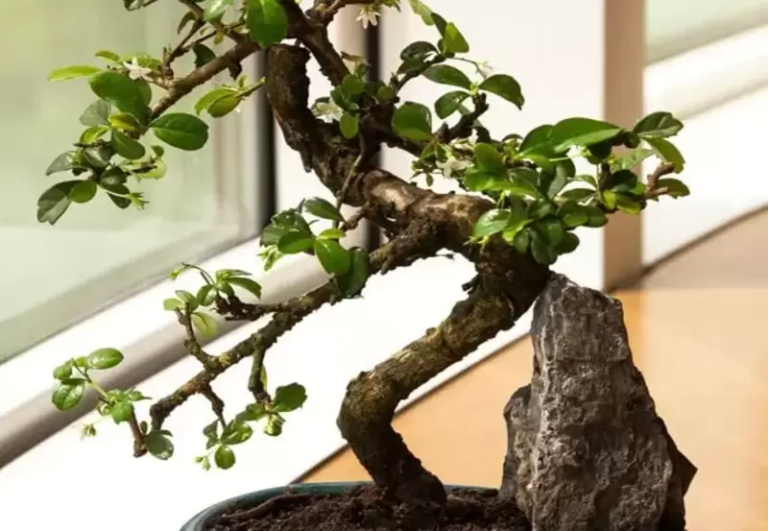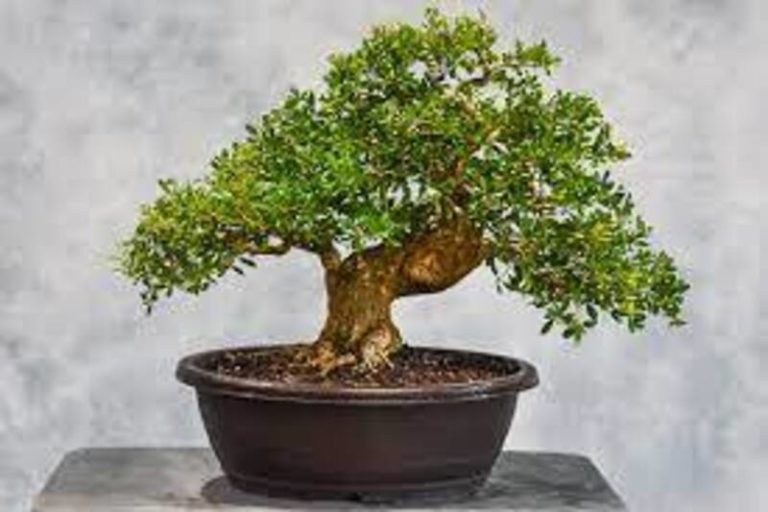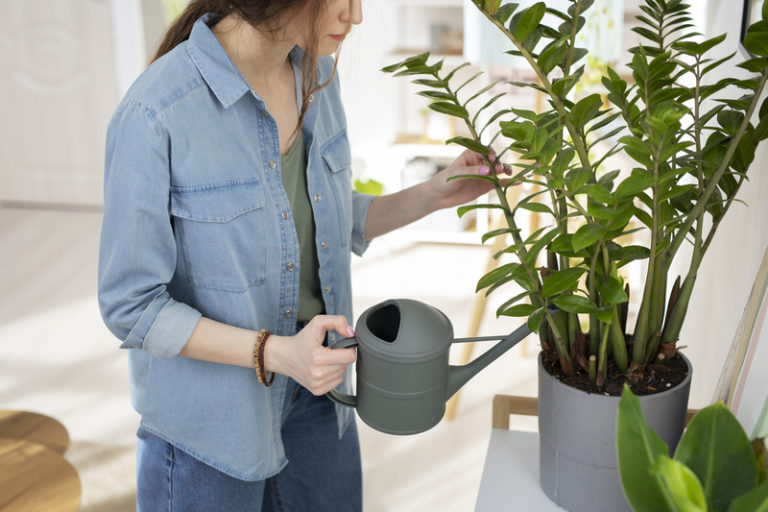Zelkova Bonsai: Nurturing Green Serenity at Home
Welcome to the world of Zelkova bonsai ( Japanese elm ) ! In this article, we’ll explore the beauty of Zelkova trees and provide details about their history, how to grow them, how to care for them, and much more. simple tips for their care. Whether you’re a beginner or an experienced gardener, join us on a journey to cultivate and showcase the charm of these miniature wonders. Let’s get started on your Zelkova bonsai adventure!
What is Zelkova Bonsai ( Japanese Elm ) ?
Zelkova bonsai is an interesting art form that includes growing and shaping Zelkova trees into small, beautiful versions of their own. Zelkova is a species of deciduous tree that is popular for bonsai because it is resilient and looks nice. Fans carefully prune, wire, and pay close attention to every detail when they make bonsai trees that look as grand as their full-sized versions but are much smaller.
History and Origins of the Zelkova Bonsai
The history and origins of Zelkova bonsai can be found in old Asian gardening practices, especially in China and Japan. A quick summary is given below:
1. China
- Bonsai is an art form that comes from old Chinese gardens, where small landscapes were made to represent real-life scenes.
- Over hundreds of years, the idea of growing trees in pots to look like they are in nature but on a smaller scale has grown.
- With their unique twisted leaves and beautiful structure, Zelkova trees became popular picks for bonsai artists in China.
2. Japan:
- Bonsai is a Chinese art that was brought to Japan and became popular during the Kamakura period (1185–1333).
- Japanese bonsai fans improved and changed the art by adding spiritual and cultural elements.
- Zelkova serrata, or Japanese Zelkova, became a popular species for bonsai because it can be used in many situations and looks beautiful.
3. After World War II:
- After World War II, bonsai became known all over the world, and Zelkova bonsai became famous in many places.
- Zelkova bonsai fans kept expanding the art form by trying out new styles and techniques to make the plants look better.
4. Contemporary Practices
- Today, Zelkova bonsai is a beloved part of the larger bonsai culture, and people all over the world practice it.
- Zelkova plants of different kinds have been added to the art form. Each has its own special qualities that bonsai artists can explore and show off.
For a long time, Zelkova bonsai has been used in many different countries. It blends old Chinese ways of doing things with the fine art of Japanese bonsai, which is why people all over the world love these cute little trees.

Zelkova Bonsai and Their Symbolism
It is important to know that Zelkova bonsai, like all bonsai, has deep societal and environmental meanings. Some things that Zelkova bonsai stands for are listed below:
1. Resilience:
- Zelkova trees, which are known for being tough and able to grow in a wide range of situations, represent strength and endurance.
- The ability of Zelkova bonsai to handle problems is similar to the strength and determination needed to get through life’s obstacles.
2. Getting in touch with nature:
- In a broad sense, bonsai shows how people can live in harmony with nature. With its natural beauty and complex shape, Zelkova bonsai shows us this link and makes us think of the natural world as a whole.
3. Balance and Harmony
- To make a Zelkova bonsai, you have to carefully prune and shape the tree so that its look is balanced and harmonious. This fits with the Japanese style of balance and simplicity, which encourages a feeling of calm and order.
4. Reflection of Seasons:
- As deciduous trees, zelkova trees’ leaves change with the seasons. This changing of the seasons is a metaphor for how life goes in cycles, with each season representing a different time and set of events.
5. Longevity & Wisdom:
- Zelkova bonsai and other types of bonsai are thought to bring good luck and long life in some countries. The fact that these tiny trees grow and age slowly shows how knowledge and experience build up over time.
6. Cultural Significance:
In Japan, Zelkova bonsai, especially the Japanese Zelkova type, are important to their culture. As a tribute to the Japanese custom that started bonsai, it may represent the strong link between the past and the present.
7. Personal Growth:
Growing bonsai, like Zelkova bonsai, is often seen as a personal journey. Growing a small tree into a big tree is a lot like growing up. It takes time, patience, and commitment.
Being aware of the meanings behind Zelkova bonsai trees makes enjoying these small trees more enjoyable. Zelkova bonsai is a living example of cultural values, natural balance, and the beauty of the art of bonsai cultivation. It can be seen in homes, parks, or art shows.
Characteristics of the Zelkova Bonsai
There are certain distinctive characteristics about zelkova bonsai that make it attractive. Understanding these traits is important for growing and enjoying these small trees. Some of the most important things about the Zelkova bonsai are:
1. Changing Leaves:
Zelkova bonsai has leaves that change color with the seasons, which makes it look nice all year long.
2. Leaves with points:
The Zelkova bonsai tree looks very classy because its leaves are small and pointy.
3. Nice Branches:
The leaves on a Zelkova tree grow in a nice, even way. Bosque plants can be shaped to look even more beautiful by the people who grow them.
4. Bark Variety :
The bark on the base of Zelkova bonsai gets more interesting as it ages, with more colors and textures. This makes the tree more interesting.
5. Easy to Take Care :
You can cut and shape zelkova bonsai, but it’s tough and can handle different planting methods. Because of this, it’s a good pick for people who are new to bonsai.
6. Seasonal Changes:
In every season, Zelkova bonsai has a different look. In the spring and summer, the leaves are bright green. In the fall, the leaves turn red, orange, or yellow, which makes the bonsai look very pretty.
7. Different Sizes:
Trees of Zelkova can be grown in different sizes. There are big and small ones. People can pick the size that works best for them.
8. Strong Root System:
The roots of a good Zelkova bonsai tree are spread out around the base of the tree. The tree looks stable and even because of this.
9. Resilient Nature:
The Zelkova tree is strong and doesn’t get sick or have bug problems often. People can easily take care of this.
Knowing these simple facts about Zelkova bonsai helps bonsai fans enjoy and take care of their plants, making the activity a fun and beautiful one.
How to Grow Zelkova Bonsai
Taking care of a Zelkova bonsai plant can be fun and fulfilling. Here is a short outline of how to grow your own Zelkova bonsai:
- Picking Out Your Zelkova: Pick out a young Zelkova tree to begin. You can get them at a plant store or nursery. Find one with a strong base and branches.
- Choosing Right Pot: Make sure the pot you choose is the right size for your Zelkova. There should be holes in the bottom so that water can drain out.
- Getting the Soil Right: For your Zelkova shrub, use soil that drains well. You can either buy bonsai soil or mix regular soil with sand or perlite to make your own.
- Planting Zelkova: Slowly take the Zelkova out of its original pot and put it in the bonsai pot. Pack the soil down around the roots in a light way.
- Putting in Right Place: Zelkova bonsai likes sunlight but not too much heat. It should be put somewhere that gets some sunshine during the day but doesn’t get too hot.
- Watering: When the top soil feels a little dry, water your Zelkova bonsai. Make sure the pot’s bottom doesn’t hold water.
- Fertilization: Use bonsai fertilizer when the plants are growing, which is in the spring and summer. Follow the directions on the fertilizer box to make sure you don’t use too much.
- Pruning and Shaping: To form your Zelkova bonsai, cut off any branches that aren’t needed. This makes it grow in a way that looks good and is balanced. You can also gently bend the twigs into the shape you want with wire.
- Repotting: You should repot your Zelkova bonsai every couple of years to keep the soil fresh and help the plant grow well. This is often best done in the spring.
- Diseases and pests: Check your Zelkova tree often for diseases or pests. Do something right away if you see any problems with your bonsai to keep it healthy.
- Enjoying Your Zelkova Bonsai: You can show off your Zelkova bonsai indoors or outdoors once it is well-established. Take your time to enjoy its beauty; it’s a live work of art.
It takes patience and pleasure to grow a Zelkova tree. For as long as you give your Zelkova bonsai some love and care, it will grow and look beautiful in your home.
Displaying and Showcasing the Zelkova Bonsai
Putting a Zelkova tree on display can be a lovely and satisfying experience. Here are some tips on how to show off and emphasize its beauty:
- Choosing the Right Location
- Natural Light: Put the bonsai in a place where it will get enough natural light without being in full sunlight for long periods of time.
- Indoor/Outdoor: Depending on the weather, Zelkova bonsai can do well both inside and outside. Think about what your tree needs in particular.
- Space: Pick a spot for the bonsai that will make it the center of attention and let you enjoy its beauty.
2. Choosing a Display Stand or Pot:
- Traditional Stand: Choose a bonsai stand made of wood or a material that goes well with the look of the tree.
- Pot Choice: Choose a pot that is the right size and shape for the tree. Think about using earthy colors or simple patterns that bring out the tree’s natural beauty without taking away from it.
3. Setting up and positioning:
- Front Position: Figure out the tree’s best front angle so that its best traits can be seen. Most of the time, this is where the main trunk movement and nebari (surface roots) look their best.
- Eye Level: When displaying a bonsai indoors, putting it at eye level or just below can help people see all of its fine features better.
4. Using Accessories to Draw Attention:
- Accent Plants or Moss: To improve the look of your bonsai, put small accent plants or moss around the base of it.
- Decorative Elements: To improve the overall display, think about adding complementary elements like small figurines, rocks, or tiny landscape features.
5. Season-related thoughts:
- Adjustments: Make changes to the display as par as the season. For example during blooming times or fall foliage you can adjust.
6. Maintenance and care:
- Pruning and Trimming: To keep the bonsai healthy and in good shape, cut and trim it often.
- Watering and Fertilizing: Make sure the bonsai gets the right amount of water and nutrients for its needs.
- Re-potting: If you want the Zelkova bonsai to stay healthy and grow, you should repot it every so often.
8. Educate and share:
- Informational plate: You might want to put up a small plate with information about the bonsai’s species, age (if known), and any special features.
- Sharing what you know: Tell guests about the bonsai and how to take care of it to help them understand and appreciate it.
Keep in mind that showing off a Zelkova bonsai is more than just showing off a tree; it’s about sharing the beauty of nature and the art of bonsai growing. It will stay beautiful for years to come if you take care of it regularly.
Styling and Design of a Zelkova Bonsai
To make an interesting style and design for your Zelkova bonsai, you need to pay close attention to its natural features and add a little artistic flair. Here are the steps you need to take to style and create your Zelkova bonsai:
1. Understand the Natural Characteristics:
To begin, watch how your Zelkova tree naturally grows. Watch how the tree’s trunk moves, how its branches are structured, and where the leaves are located. By knowing these natural traits, you can make better style choices.
2. Choosing the Bonsai Style:
Choose a bonsai style that goes well with the way your Zelkova looks. Formal upright, relaxed upright, slanting, cascade, and semi-cascade are some common styles. Think about the look you want to achieve as a whole.
3. Pruning for Structure:
First, cut off any stems or growth that you don’t want. Focus on making a branch structure that is clear, balanced, and fits with the type of bonsai you want to grow. Cut the bonsai shears cleanly by using them.
4. Wiring for Shape:
Wiring is a very important way to shape your Zelkova bonsai’s branches and trunk. You can gently move the branches into place with aluminum or copper wire. Be careful not to wrap the wire around the tree too tightly, or you could hurt it.
5. Consider the Nebari:
A well-developed nebari, or the top roots that spread out from the trunk’s base, makes your Zelkova bonsai look better. If you have to, you can show the top roots and help them grow over time.
6. Create Taper in the Trunk:
Make sure that the root of your Zelkova bonsai gradually tapers from the base to the top for a more natural and aesthetically pleasing look. You can do this by trimming carefully and letting new branches grow.
7. Balance and Proportion:
Keep your design balanced and in the right proportions. Make sure that no one branch or part of the tree takes over the whole design. To get a good plan, take regular steps back and look at the tree from different sides.
8. Consider Seasonal Changes:
Allow and emphasize the changes that come with the seasons in your Zelkova bonsai’s design. Think about the tree’s appearance at different times of the year and change how you decorate it to show off its changing beauty.
9. Patience and Iteration:
A Zelkova bonsai needs to be styled and designed over time, which takes time. It could take several styling sessions spread out over a few years to get the shape you want. Don’t be afraid to make changes as the tree grows.
10. Seek Inspiration:
You can get ideas and help from bonsai books, websites, and local bonsai groups. Talking to experienced bonsai fans and looking at well-styled Zelkova bonsai can teach you a lot about good design methods.
Don’t forget that the way you style and create your Zelkova bonsai is an expression of your own imagination. Enjoy the process, and let your tree’s unique features help you make a beautiful, well-balanced piece.
How to Care for and Maintain a Zelkova Bonsai
Providing consistent attention to the specific requirements of a Zelkova bonsai and maintaining its health are essential for its proper maintenance and cultivation. Here’s a comprehensive guide:
1. Sunlight: Position your Zelkova bonsai in an area that receives ample indirect light. An area that receives filtered sunlight is optimal. Ensure it is situated near a bright window if kept indoors.
2. Watering: Check the topsoil often, and water your Zelkova bonsai when it feels a little dry. Give it a lot of water and let the extra water drain out. You should keep the soil from drying out or getting too wet.
3. Soil and Repotting: For your Zelkova, use bonsai soil that drains well. Every two to three years, usually in early spring, you should repot the bonsai to refresh the soil and help the roots grow in a healthy way.
4. Fertilization: If you want your bonsai to grow, use a balanced fertilizer in the spring and summer. Follow the directions on the fertilizer box for how much to use. When the tree is dormant in the fall and winter, cut back on or stop feeding it.
5. Pruning: Prune your Zelkova bonsai on a routine basis to preserve its form and promote branching. Trim undesired growth from the bonsai using pointed shears. This promotes a neat look and focuses the energy of the tree where it is needed.
6. Wiring: Shape the branches and trunk of your Zelkova bonsai with wiring. Apply the wire cautiously to avoid damaging the branches. Remove the wire before it cuts into the bark, which should be done within a few months.
7. Keeping safe from harsh weather: Even though Zelkova bonsai is hardy, it should not be left in harsh circumstances. Keep the tree safe from very hot weather, frost, and strong winds. If the weather is bad, you might need to move it indoor.
8. Pest and Disease Control: Check your Zelkova tree often for bugs like aphids and spider mites. Use insecticidal soap or neem oil right away to get rid of any pest problems. Keep an eye out for diseases like leaf spots and treat them as needed.
9. Seasonal Changes: Adapt your care schedule to the seasons. Reduce watering during the winter months when the tree is dormant. Maintain a more regular watering and fertilizing plan during the spring and summer, when the Zelkova is actively developing.
10. Thoughts on Display: Pick out a good spot to show off your Zelkova bonsai. To make sure it grows evenly, turn it every so often. Do not put it near drafts, heating vents, or air conditioners that can be stressful.
11. Patience and Observation:
Caring for a bonsai tree takes time and attention. Watch how your Zelkova bonsai reacts to different ways of caring for it and change your routine as needed. Watch out for changes in the tree’s health and look.
Your Zelkova bonsai will stay healthy and beautiful over time if you give it the right care and attention every day. Remember that every bonsai is different, so change how you care for your Zelkova based on its wants and traits.
Zelkova Bonsai Care Sheet
| Aspect | Care Tips |
|---|---|
| Watering | Keep the soil consistently moist, but not waterlogged. Water when the topsoil feels slightly dry. Ensure proper drainage to prevent root rot. |
| Sunlight | Provide indirect sunlight for at least 6 hours a day. Protect from harsh afternoon sun. |
| Temperature | Thrives in a temperate climate. Avoid extreme temperatures. |
| Humidity | Prefers moderate humidity. Mist the foliage in dry conditions. |
| Fertilization | Use balanced bonsai fertilizer during the growing season. Follow recommended dosage. |
| Pruning and Trimming | Regularly prune to maintain shape and encourage branching. Trim away unwanted growth. |
| Wiring and Styling | Use wiring to shape branches and the trunk. Remove wire before it cuts into the bark. |
| Repotting | Repot every 2-3 years in well-draining bonsai soil. Typically done in early spring. |
| Pest and Disease Control | Inspect regularly for pests and diseases. Treat promptly with appropriate remedies. |
| Winter Care | Protect from frost and extreme cold. Reduce watering during dormancy. |
| Regular Maintenance | Rotate the bonsai for even growth. Monitor overall health and address issues promptly. |
This care sheet is a quick reference guide for keeping your Zelkova Bonsai healthy and growing. Adjustments can be made based on your exact environmental circumstances and your bonsai’s special demands.
Conclusion
A Zelkova bonsai is a fun project that combines art and nature. With regular care, creative style, and attention to its unique features, the Zelkova bonsai can be turned into a beautiful living sculpture. Zelkova bonsai gardening is more than just a hobby. It’s a trip of patience, creativity, and link with nature that will bring a charming and peaceful addition to your home.
FAQ
Q: What is a Zelkova bonsai?
Ans: A Zelkova bonsai is a miniature version of a Zelkova tree, cultivated and shaped using bonsai techniques.
Q: What types of Zelkova are suitable for bonsai?
Ans: There are three types of Zelkova that are most popular for bonsai: Japanese zelkova (Zelkova serrata), Nikko zelkova (Zelkova carpinifolia), and Korean zelkova. All of them are pretty easy to take care of and can be made in different ways.
Q: How do I care for a Zelkova bonsai?
Ans: Taking care of a Zelkova bonsai means giving it enough sunshine, watering only when the ground is almost dry, using soil that drains well, pruning and shaping it regularly, and fertilizing it as needed.
Q: Can Zelkova bonsai be kept indoors?
Ans: Zelkova bonsai can be kept indoors, but they usually do better outside where they can get natural sunshine and see the seasons change. If you keep them inside, put them near a bright window and think about letting them go outside when the weather is nice.
Q: How often should I fertilize my Zelkova bonsai?
Ans: During the growth season (spring and summer), use a balanced bonsai fertilizer to feed your Zelkova tree. Follow the directions on the fertilizer box for how much to use. When the tree is dormant in the fall and winter, cut back on or stop feeding it.
Q: When should I repot my Zelkova bonsai?
Ans: You should repot your Zelkova bonsai every two to three years, usually in early spring before the plants start to grow. Repotting helps the dirt stay fresh, keeps the roots from getting squished, and encourages healthy root growth.
Q: Is pest control necessary for Zelkova bonsai?
Ans: Yes, you should check your Zelkova bonsai often for bugs like aphids and spider mites. Treat right away with the right tools to keep the tree from getting hurt. Also, keep an eye out for signs of illness and treat them as needed.
Q: Can Zelkova bonsai withstand winter conditions?
Ans: Even though Zelkova bonsai is hardy, it should be kept away from frost and very cold weather in the winter. During dormancy, feeding should be cut back, and during bad weather, the bonsai might need cover or to be brought inside.
Q: How long does it take for a Zelkova bonsai to mature?
Ans: The time for a Zelkova bonsai to mature varies depending on factors like the starting age of the tree, growth conditions, and care provided. It can take several years, a decade, or more for a Zelkova bonsai to achieve a mature and aesthetically pleasing appearance.
Also Read:


